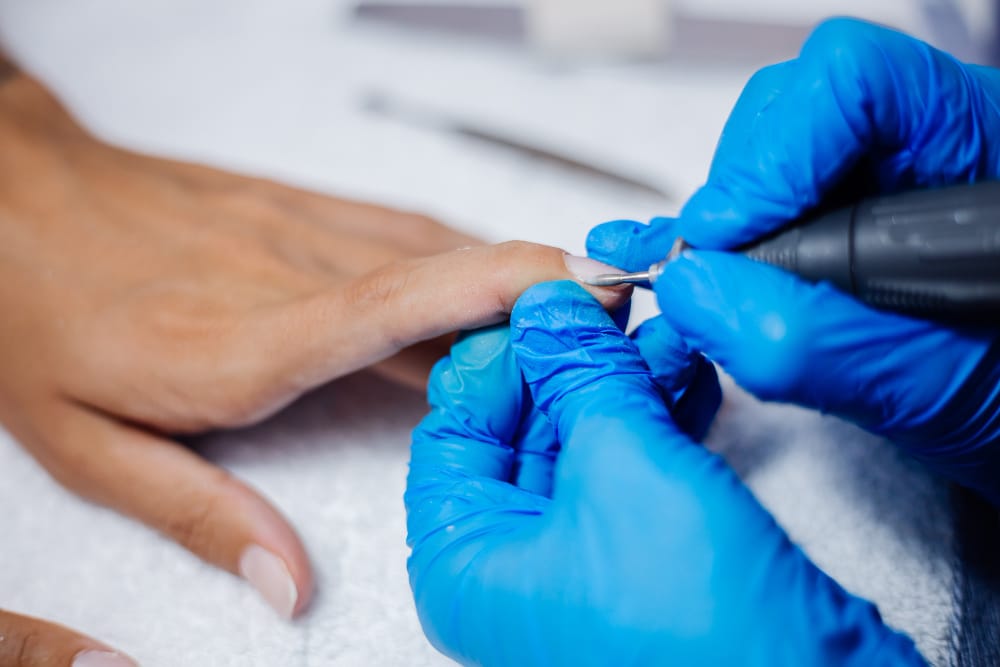Fungal nail infection is a very common issue caused by microscopic fungi that can infect, inflame, discolor, and damage the fingernails and toenails. The medical term for a fungal nail infection is onychomycosis. While rarely serious, these stubborn infections need to be treated properly to avoid recurrence and permanent nail damage.
What Triggers a Fungal Nail Infection?
Tiny fungal organisms naturally live on the skin and nails without issue. But certain conditions allow the fungi numbers to grow causing an infection in the nail bed. The three main offenders are dermatophytes, candida, and non-dermatophyte molds.
These microbes infect the nails through small separations, cracks, or trauma that allows access to the warm, moist environment underneath. Fungi thrive in such areas.
Age as a Key Risk Factor
Fungal nail infection becomes more common with older age. This is because nail growth slows down as we get older. The nails thicken while the growth rate declines, making the elderly more prone to cracking and infection. Fungi also tends to affect nails differently at advanced ages.
Studies show the highest incidence of fungal nail infection is in adults over 60. Up to 20% of people ages 60-79 may be affected. The numbers continue rising into the 80s and 90s as well. The reasons are multifactorial – slower nail growth, reduced blood circulation, a greater chance of diabetes, more exposure over a lifetime, weakened immunity etc. So advanced age itself is a key risk factor, likely due to these age-related changes.
Factors That Increase Risk
While anyone can develop nail fungus, some factors boost susceptibility:
- Diabetes – High blood sugar facilitates fungal growth.
- Circulation issues – Reduced blood flow to extremities.
- Nail or skin injury – Damage provides an entry point.
- Weak immunity – Makes infection more likely.
- Genetics – Susceptibility can run in families.
- Lifestyle – Wet feet, tight shoes, sharing nail items.
Signs and Symptoms
Some common signs and symptoms include:
- Thickened, brittle, distorted, ragged nails.
- Debris visibly collecting under nails.
- Discolored streaks – white, black, yellow, green
- Crumbling, loosening, or falling off nails.
- Discomfort, pain, tenderness
The toenails are especially prone due to confinement in shoes, providing a warm moist environment fungi love. One or multiple nails may be affected. If any of the symptoms appears, you can seek an online dermatologist who will diagnose the condition and provide you with further guidance.
Seeking a Proper Diagnosis
Seeing a Dermatologist or podiatrist for diagnosis is recommended when infection is suspected. They will examine the nails and surrounding skin closely for visual signs. You can have online dermatology consultation for diagnosis and further guidance. Clippings and debris may be sent to the lab for microscopic analysis to identify the type of fungus present.
Treatment Options for Fungal Nail Infection
Mild cases without pain can just be monitored. But most require antifungal medication such as:
- Prescription topical nail lacquers – Applied directly to the nail.
- Oral antifungal tablets – Most effective systemic treatment option.
- Laser or photodynamic light therapy – Exposure to specialized light/lasers.
- Removing infected nails – Allows new healthy nails to regrow.
Lifestyle measures like keeping nails dry and trimmed, rotating shoes and socks, and using antifungal powders also help. Home remedies have anecdotal benefits but lack strong clinical evidence so it’s better to seek a dermatologist nearby or an online dermatologist consultation can benefit you. You can also have online dermatology consultation from our website for proper treatment guide and care.
Preventative Care Recommendations
There are several preventative care tips that can reduce the risk of developing a fungal infection:
- Allow nails to dry thoroughly after exposure to moisture. Use a towel and cool hairdryer to ensure they are completely dry.
- Wear shower shoes or sandals in public places like gyms and pools. Choose styles that let the feet breathe and avoid moisture retention.
- Opt for well-ventilated shoes and moisture-wicking socks. Rotate pairs of shoes to fully dry between uses. Bacteria and fungi thrive in damp environments.
- Avoid sharing personal items like towels, socks or nail files with infected individuals. This can easily spread fungal spores.
Signs to Seek Medical Care
Consult a podiatrist or dermatologist for:
- Any persistent nail changes, thickening, distortion, detachment.
- Discoloration of nails with white, black, yellow, or green streaks.
- Any accumulation of debris visible under nails.
- Associated pain, tenderness, discomfort, or foul odor.
Leaving fungal nail infections untreated can allow them to worsen over time and spread infection. It is important to seek proper medical care and for it, we have online dermatologists available; you can find them on our website and have online dermatology consultations for providing you with medical care.
Conclusion
Fungal nail infection is a very widespread issue, especially among the elderly. They are caused by microscopic fungi that infect the nails through cracks and separations. Key signs are discolored, distorted, thickened nails with debris underneath. While rarely serious, these stubborn infections can recur if not treated properly with oral and topical antifungals. Preventative care like keeping feet dry, disinfecting pedicure tools, and promptly treating athlete’s foot are important to reduce risk. For early diagnosis and aggressive prescription treatment, you can find GP near me and have an online GP registration from our website. However, permanent damage is possible if the infection is allowed to persist untreated over time.
